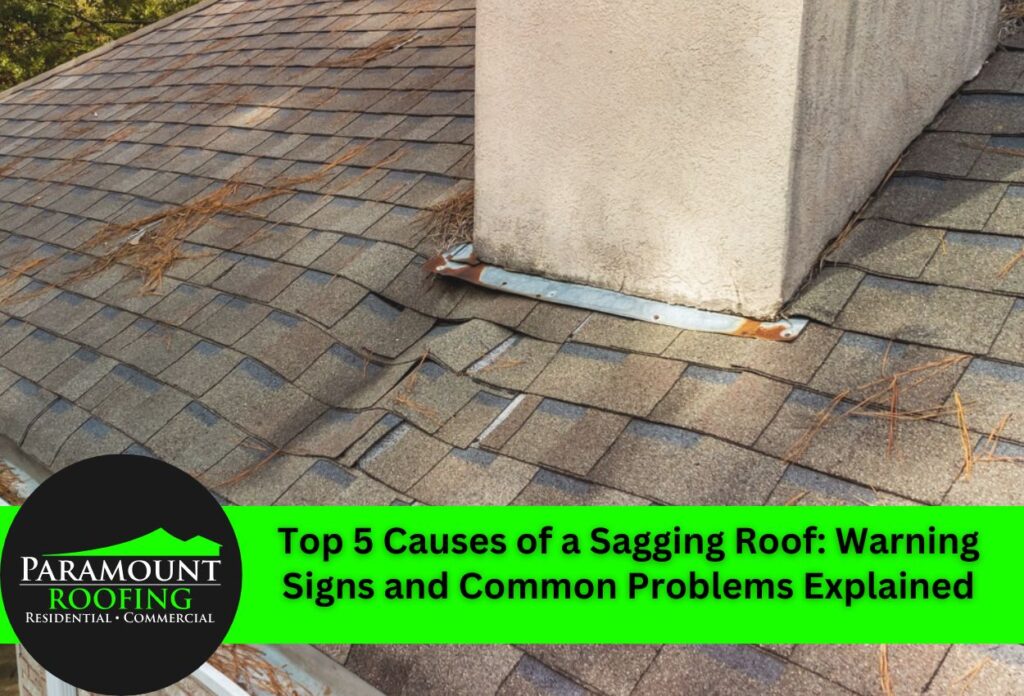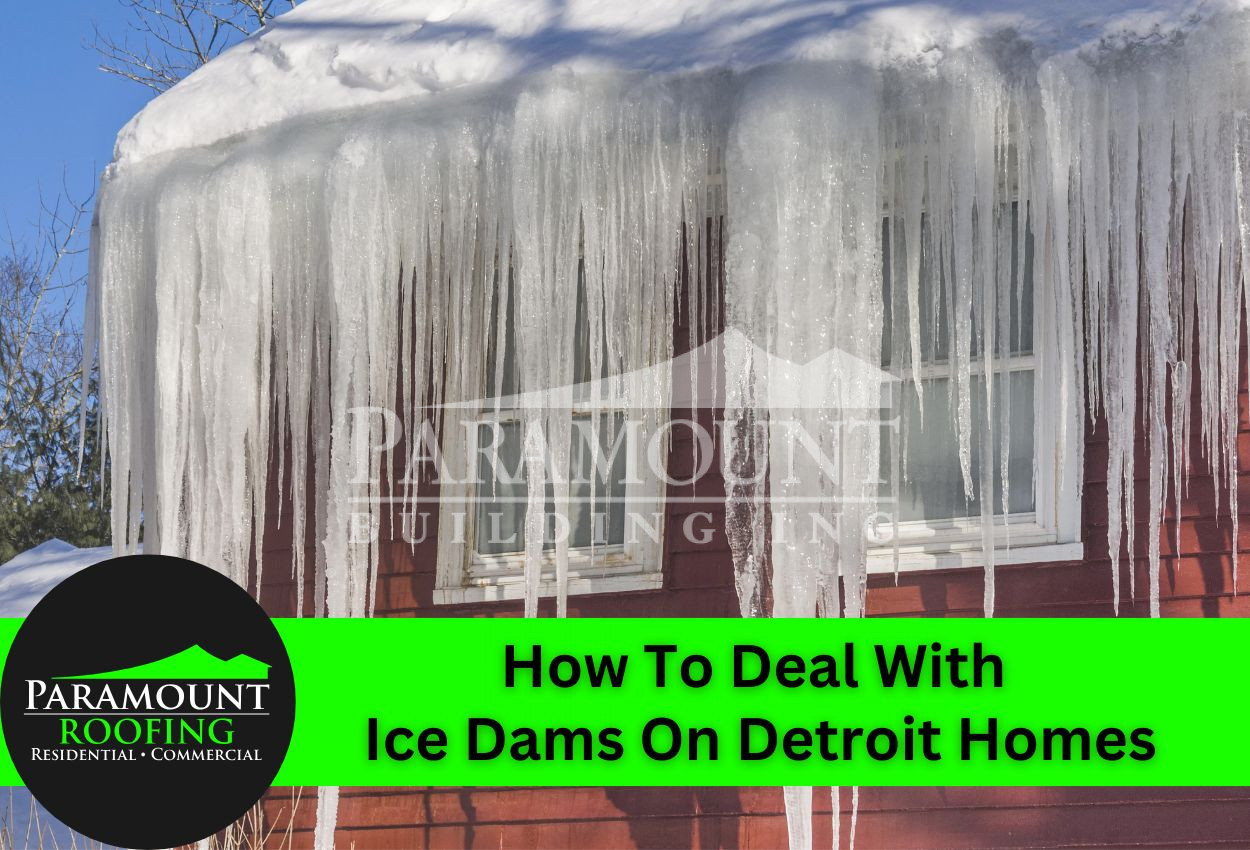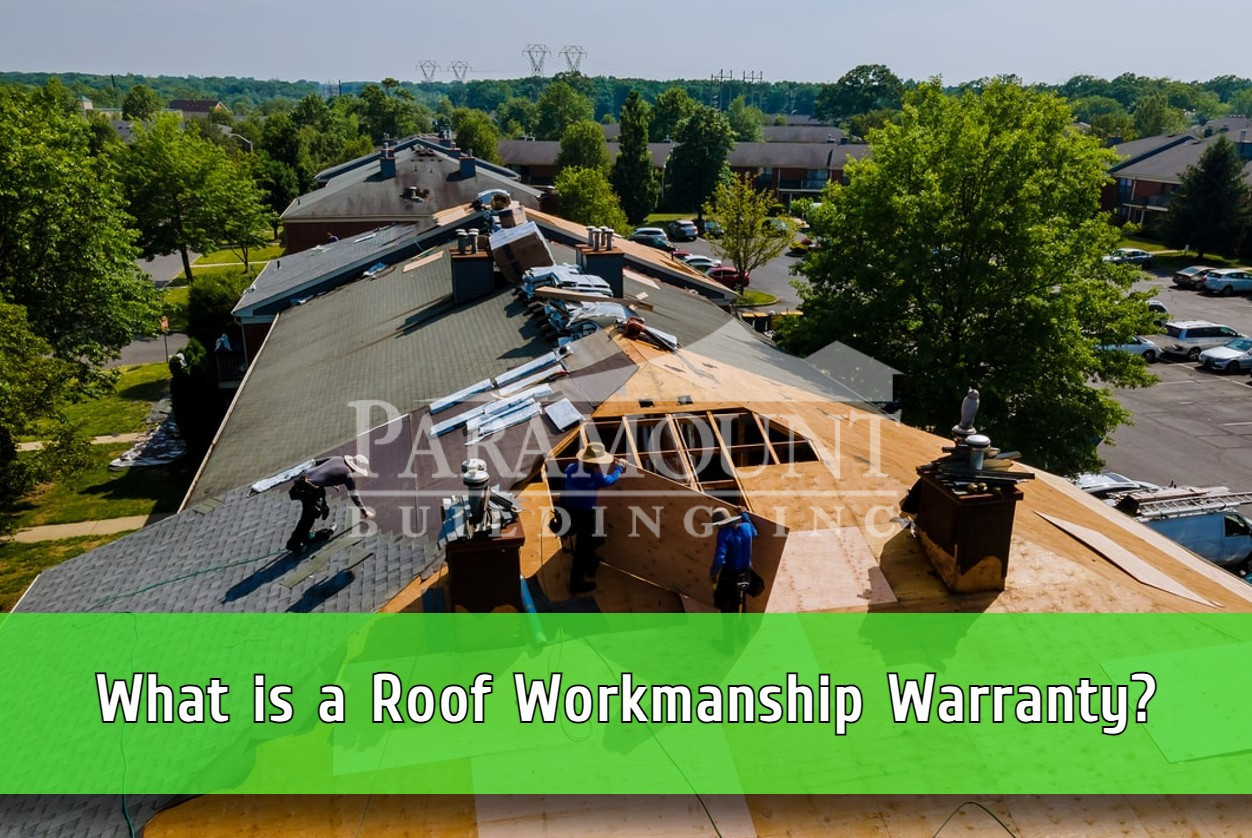Top 5 Causes of a Sagging Roof: Warning Signs and Common Problems Explained

A sagging roof represents one of the most serious structural problems a homeowner can face. When roof support beams weaken or fail, the entire roofline begins to dip and curve in ways that signal immediate attention is required. Understanding the causes of a sagging roof helps property owners identify problems before they lead to catastrophic failure or expensive damage to the interior of their homes.
Roof structural damage rarely happens overnight. Most sagging develops gradually as load-bearing issues compound over time. Heavy snow, aging materials, water damage, or inadequate construction methods can all contribute to roof support beam problems that eventually become visible as obvious sagging.
Early detection can be the difference between a manageable repair and a complete roof replacement. Many warning signs appear inside the home before the sagging becomes obvious from street level. Ceiling cracks, doors that suddenly refuse to close properly, and windows that stick or gap can all indicate that roof load-bearing issues are causing the structure above to shift and settle.
Recognizing these warning signs and their causes allows homeowners to address structural problems while sagging roof repair remains possible, preventing more extensive damage to both the roof system and the home’s interior spaces. In this guide, we will get into detail about the most common reasons a roof begins to sag and when to contact a roofing contractor for help.
#1. Heavy Snow and Weather Damage that Lead to Roof Problems
Winter weather conditions create significant challenges for roof structures, particularly when heavy snow accumulates beyond design limits. Most residential roofs can handle typical snow loads, but extended periods of heavy snowfall can push weight capacity to dangerous levels. When snow buildup exceeds structural limits, roof support beam problems develop as wooden beams gradually bend under excessive pressure.
The weight of wet, heavy snow places tremendous stress on load-bearing components throughout the roof system. As beams flex beyond their normal capacity, micro-fractures develop in the wood fibers. Over multiple winter seasons, these small cracks expand and weaken the structural integrity of support beams, eventually contributing to visible sagging.
Wind damage compounds snow-related roof structural damage by loosening connections between rafters, trusses, and supporting walls. Strong winds can lift roof edges, weakening the fasteners that hold everything together. Ice dams present another serious threat, trapping water along roof edges and allowing moisture into wooden support structures.
Water seeping into the roof decking and support beams accelerates wood rot and decay. Once moisture infiltrates these critical structural components, the risk of sagging multiplies rapidly. Weakened, water-damaged beams lose their ability to support normal roof loads, making immediate repair necessary to prevent complete structural failure.
#2. Age-Related Deterioration of Roof Support Systems
Time affects every component of a roof structure, with wooden support beams and rafters experiencing gradual weakening over decades of service. Natural aging processes cause lumber to lose structural strength as moisture exposure varies between wet and dry conditions throughout different seasons. Temperature fluctuations expand and contract wood fibers, creating microscopic damage that accumulates over the years and contributes to roof support beam problems.
Normal house settling places additional stress on aging roof frameworks. As foundations shift slightly and walls adjust to ground movement, roof structures must accommodate these changes. Older wooden beams become less flexible and more prone to cracking under stress, making them unable to handle normal load-bearing requirements that newer lumber could easily support.
Roof decking materials also deteriorate alongside support beams, losing their ability to properly distribute weight across the framework system. Old plywood or board sheathing often develops weak spots where moisture has entered or where fasteners have loosened over time. When decking fails to transfer weight effectively between rafters and trusses, concentrated stress points develop that accelerate roof structural damage.
The combination of weakened support beams and deteriorating decking often requires comprehensive repairs to completely address. Understanding why roof systems age helps homeowners recognize when structural components need professional evaluation before minor issues require extensive reconstruction work.
#3. Poor Construction and Inadequate Support Beam Installation
Construction defects are a significant cause of premature roof structural damage, particularly when builders use undersized rafters or improperly space support beams during initial installation. Many roof support beam problems stem from construction shortcuts taken during the building process, where contractors install rafters that cannot adequately handle long-term weight requirements from roofing materials and typical weather conditions.
Inadequate rafter spacing creates dangerous weak points throughout the roof system. When support beams are positioned too far apart, roof decking must span greater distances without proper underlying support. This excessive spanning leads to gradual sagging as the decking material begins to bow between rafters under the constant weight of shingles, insulation, and accumulated debris.
Substandard connection methods between rafters, trusses, and load-bearing walls contribute to roof issues that worsen over time. Missing or inadequately sized hardware, insufficient nailing patterns, and poor quality lumber all compromise the structural integrity needed to maintain proper roof geometry. These construction deficiencies often remain hidden until additional stress or aging materials cause visible sagging.
Construction shortcuts, including missing ridge supports, inadequate collar ties, and improperly installed beam connections, create multiple potential causes of a sagging roof within the same structure. When these problems exist together, even moderate snow or wind stress can trigger rapid deterioration that makes extensive sagging roof repair necessary to restore structural safety and prevent interior damage.
#4. Water Damage Weakening Your Roof’s Framework
Water infiltration poses one of the most destructive threats to roof structural integrity, targeting the wooden framework that keeps roofs properly aligned and stable. When roof leaks allow moisture to affect support beams and rafters, the resulting damage creates serious problems that develop gradually but relentlessly over months and years of exposure.
As mentioned above, saturated wooden beams undergo significant changes that compromise their load-bearing capacity. Water causes wood fibers to swell and contract repeatedly, breaking down the natural bonds that provide structural strength. As moisture goes deeper into beam cores, rot begins to consume the interior wood while the exterior may still appear sound. This hidden deterioration weakens beams from the inside out, creating dangerous roof structural damage that often goes undetected until sagging becomes visible.
Poor attic ventilation compounds water-related roof problems by trapping humid air against wooden structural components. Inadequate airflow prevents moisture from escaping, creating ideal conditions for mold growth and accelerated wood decay. Trapped moisture attacks roof decking, rafters, and support posts simultaneously, multiplying the risk of sagging throughout the entire framework.
The combination of direct water infiltration and ventilation problems creates a destructive environment where wooden support elements lose their ability to maintain proper roof geometry. Once water damage reaches these critical levels, comprehensive sagging roof repair becomes necessary to replace compromised structural components and restore the roof’s load-bearing capabilities before complete failure occurs.
#5. Excessive Weight from Roofing Materials and Equipment
Accumulated roofing materials and equipment frequently exceed the original design capacity of residential roof structures, creating dangerous roof load-bearing issues that lead to gradual sagging over time. Many homeowners unknowingly add layer upon layer of roofing materials without considering the cumulative weight impact on their existing support beam system.
Multiple layers of old shingles are a common cause of excessive roof weight that contributes to structural damage. Each additional layer of asphalt shingles adds approximately 250 to 400 pounds per 100 square feet of roofing area. When three or four layers accumulate over decades, the total weight can double or triple the original load that roof support beams were designed to carry. This excessive weight gradually overwhelms the framework system, causing rafters and trusses to bend beyond their structural limits.
Heavy equipment installations compound weight problems when HVAC units, solar panel arrays, or large satellite dishes are mounted without a prior structural analysis. These installations concentrate significant weight at specific points rather than distributing forces evenly across the roof system. Without adequate reinforcement of underlying support beams, concentrated loads create stress points that accelerate problems and contribute to localized sagging around equipment mounting areas.
The combination of multiple shingle layers and heavy equipment often requires a professional evaluation and extensive repairs to restore structural integrity and prevent progressive damage to the entire roof framework system.
When to Call Professional Help for Roof Structural Issues
Roof inspections involving structural damage present serious safety risks that make calling a professional essential for homeowners. Attempting to assess sagging roof conditions without the right safety equipment and structural expertise can result in falls through weakened roof decking or the collapse of compromised support beams. Professional roofing contractors have specialized safety gear, including ladders, fall protection harnesses, and structural supports that allow safe access to damaged roof areas.
Roofing professionals also have the technical knowledge required to identify the underlying causes of a sagging roof and determine whether roof support beam problems require simple repairs or complete structural reinforcement. Experienced contractors can assess load-bearing capacity, measure deflection rates, and evaluate the extent of roof structural damage using industry tools and measurement techniques.
A professional evaluation becomes non-negotiable when multiple warning signs appear simultaneously, such as visible sagging combined with interior ceiling cracks or door alignment problems. These conditions indicate that roof issues may have progressed beyond simple surface repairs and require a comprehensive structural assessment to prevent catastrophic failure.
The decision between targeted repair and full structural reinforcement depends on factors including beam condition, deflection measurements, age of materials, and extent of water damage. Professional contractors can determine whether existing roof support beam problems can be addressed through supplemental bracing or require the complete replacement of compromised structural components to restore safe load-bearing capacity.
Expert Roof Repair for Sagging Roofs in Michigan
If you’ve noticed uneven rooflines, damaged shingles, or interior warning signs like ceiling cracks and doors that won’t close properly, it’s time to call a professional to prevent further damage. Paramount Roofing specializes in diagnosing and repairing roof structural damage that leads to sagging. With the harsh Michigan winters and other weather conditions putting extra strain on your roofing system, our expert team is equipped to assess and reinforce your roof, ensuring it remains safe and durable.
Call Paramount Roofing today at (586) 690-0227 for a professional evaluation and tailored solutions to restore the integrity of your roof. Remember, addressing the causes of a sagging roof early can save you from complete system failure in the future.
 Free Estimate
Free Estimate
 Request Service
Request Service Locations
Locations 



